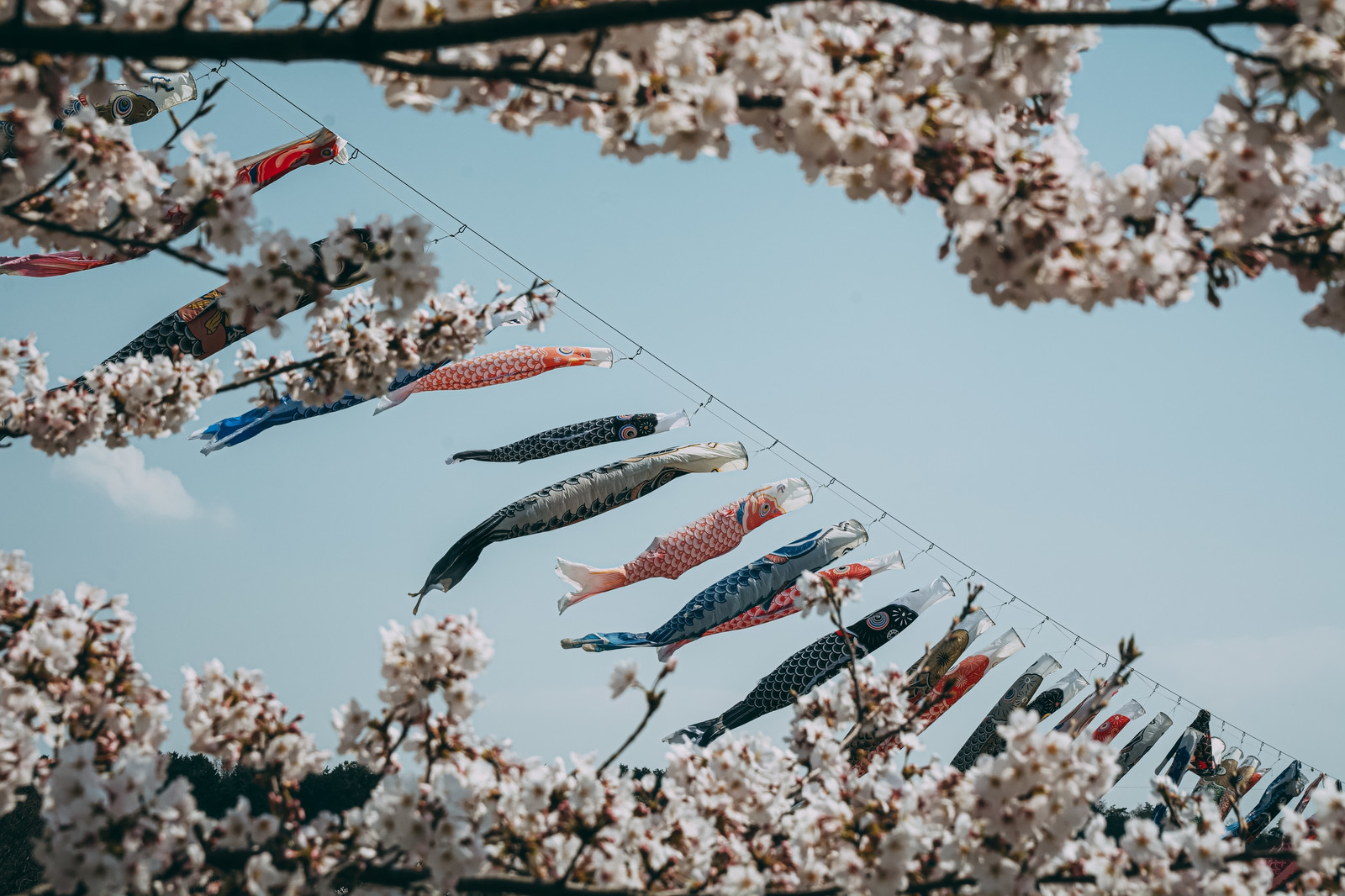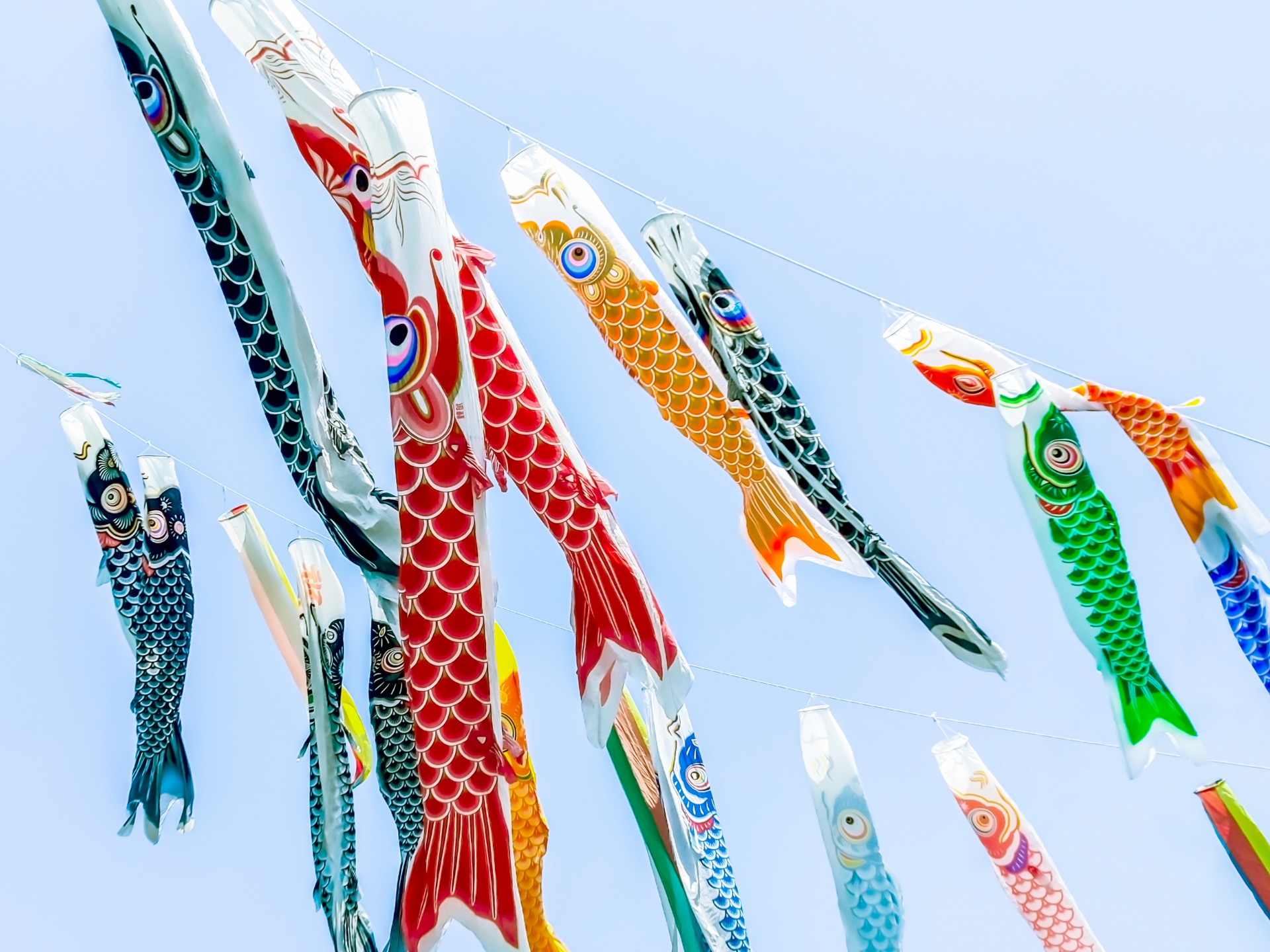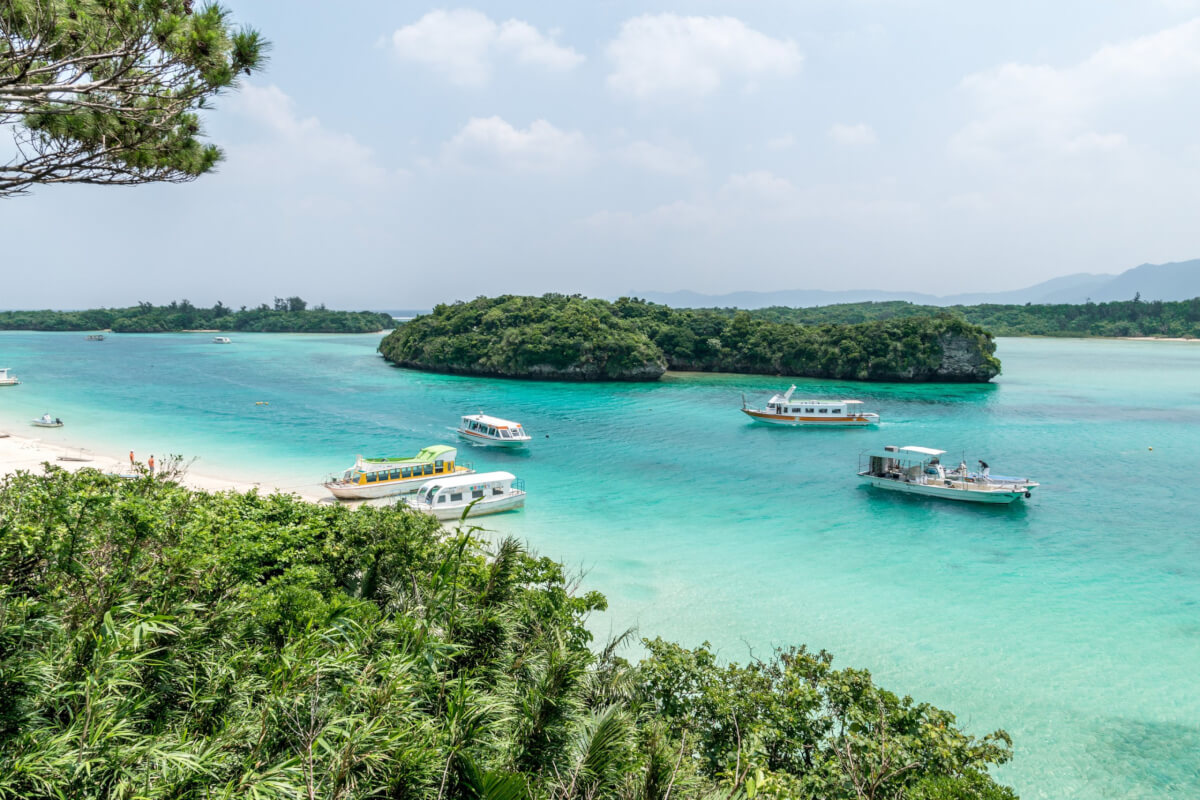Japan has 16 national holidays in a year. In May, there is Children’s Day, which takes place on May 5th annually, hoping for the healthy growth of children as well as their happiness for the year. Here you can learn how people celebrate Children’s Day in Japan!
When is Children’s Day in Japan?
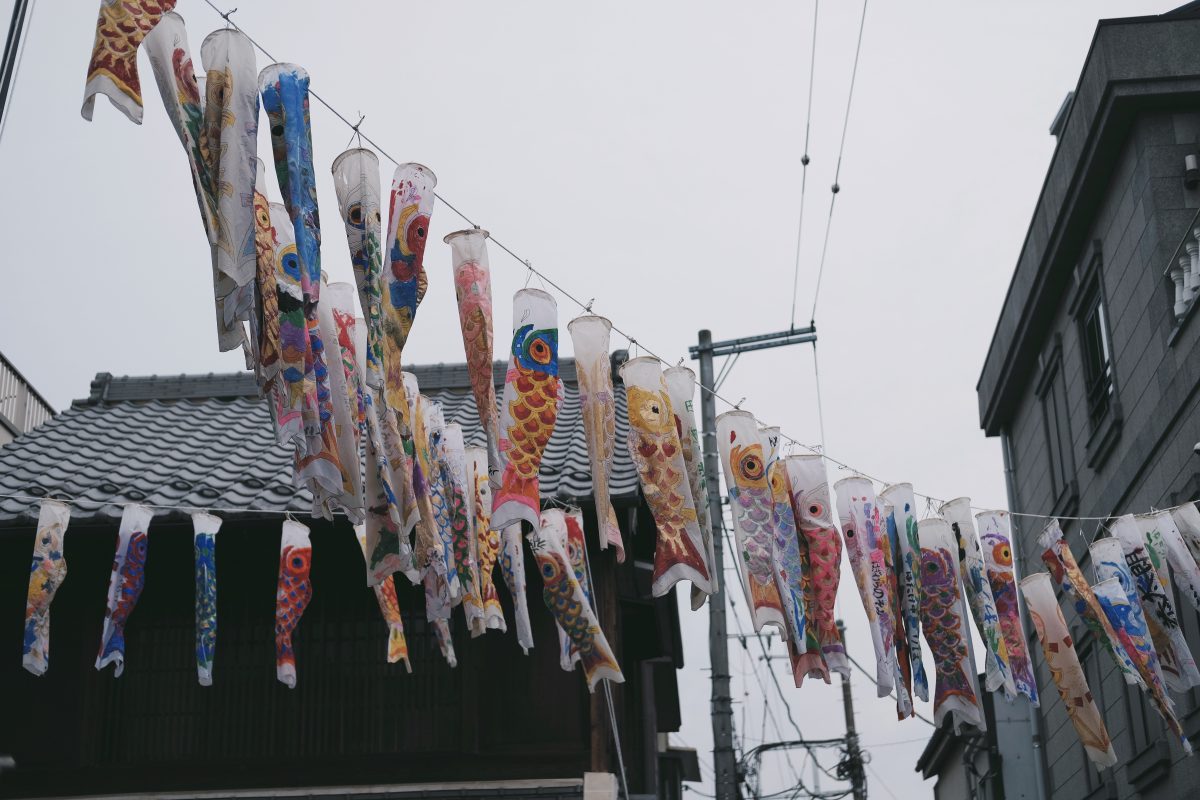
As we mentioned above, Children’s Day is celebrated on May 5th in Japan. It was officially established in 1948, and has not been changed since then. There is Children’s Day in other countries too. For example, China and Russia celebrate it on June 1st, since it is officially recognized as International Children’s Day which was originally proclaimed at the World Conference on Child Welfare in 1925. Similarly, November 20th officially became known as World Children’s Day which was established by the UN General Assembly in 1954. However, these Children’s Days are not quite the same in Japan.
How to Celebrate Children’s Day in Japan
Whereas Children’s Day in the world means to celebrate and protect human rights for children, the Japanese Children’s Day is deeply connected to Shintoism – the indigenous religion of Japan. Children’s Day in Japan was originally only for boys while Hinamatsuri celebrates the healthy life of girls. It used to be a traditional event carried out to ward off evil spirits. So, what do we do to celebrate Children’s Day in Japan?
Display traditional “Kabuto” (兜) ornament

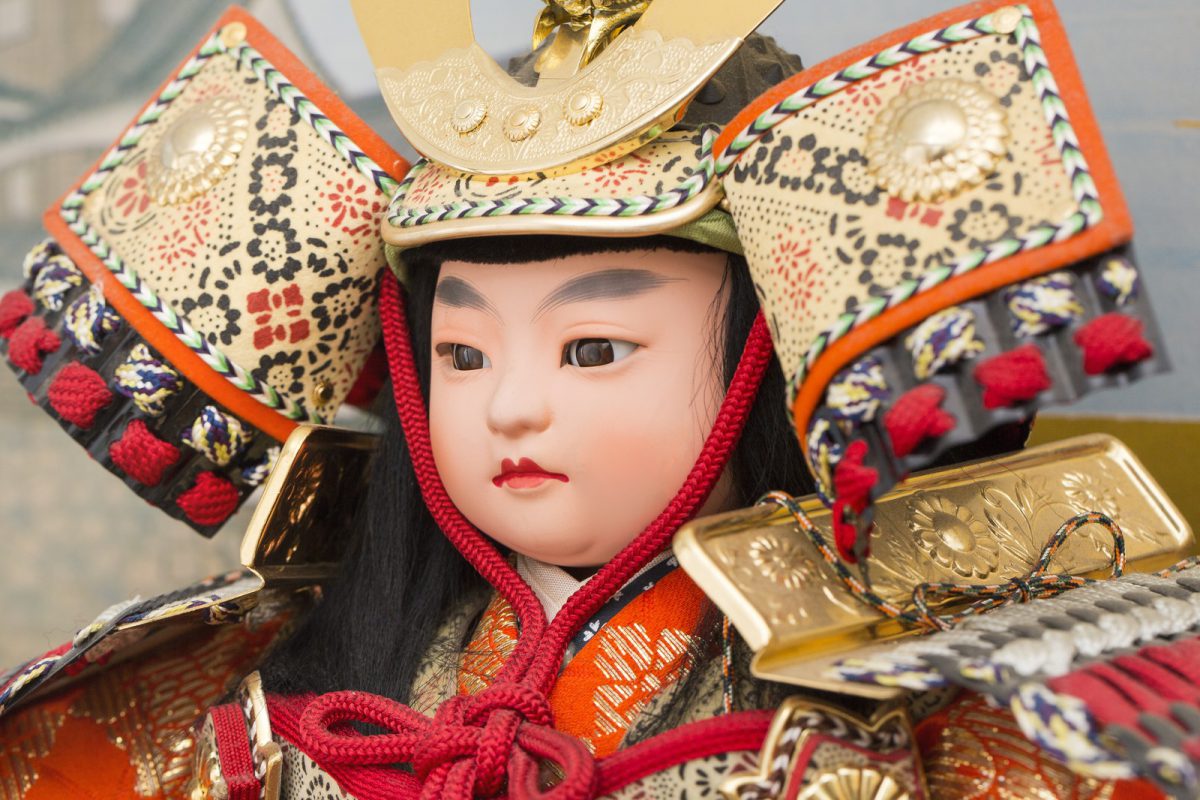
One of the most famous ways to celebrate Children’s Day in Japan is to display traditional ornaments such as Kabuto (兜) and Gogatsu-ningyo (五月人形). Kabuto is a traditional samurai helmet often adorned with beautiful decorations. Gogatsu-ningyo refers to Japanese warrior dolls equipped with armor and a Japanese sword. People display them at home, hoping for a healthy growth of boys. It can be regarded as equivalent to Hina-ningyo (ひな人形), traditional beautiful dolls for Hinamatsuri on March 3rd.
How to make Kabuto with Origami
If you like to make kabuto at home, you can easily make it with origami!
- Fold the paper diagonally.
Take the bottom corner and fold it up to the top – like a triangle. Make sure that all the corners and edges are perfectly neat. - Take both sides and fold them up to the top.
Take both of the bottom corners and fold them up to the top point. Make sure that the corners don’t overlap each other! - Fold the top points down to the bottom points.
- Rotate the whole paper (turn the paper 180°).
- Make two horns (two horns out to opposite directions).
Take the two top points and fold them outside (easy to understand if you follow the instructions on the video). - Fold the bottom of the sheet up to the middle & roll up the very bottom again.
- Take the back sheet and push it inside the pocket!.
Koinobori/ Carp Streamers (こいのぼり)

If you look up, especially in the residential or rural areas in Japan, in early May, you will spot some giant carp streamers swimming gracefully up in the sky. They are called Koinobori, (こいのぼり) which have been considered a symbol of power and toughness since the Edo period (1603-1868) when the custom originally started. Carps are a symbol of strength, courage, and success in the Japanese culture because of their ability to swim upstream. Families will raise these carp-shaped windsocks to pray for perseverance and success. Traditionally, the set contains a black koinobori representing the father, followed by a smaller, red koinobori representing his eldest son. If there are more boys in the family, an additional carp is added. The red or pink koinobori represents the mother of the family. Present day, the koinobori commonly consist of a big black koinobori for the father, the next biggest (red or pink) for the mother, and additional, smaller carps of different colors for each child, boys, and girls.
Eat Kashiwamochi and Chimaki
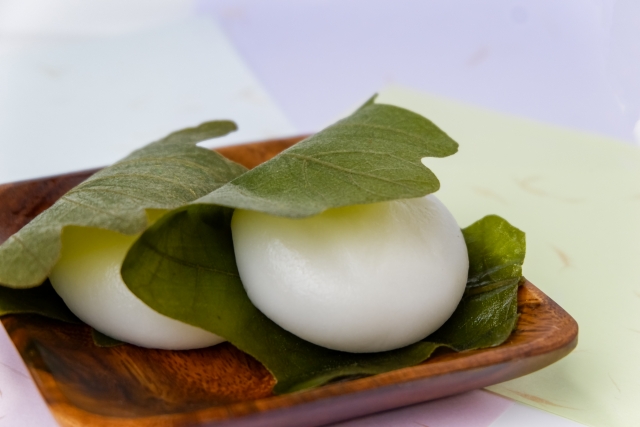
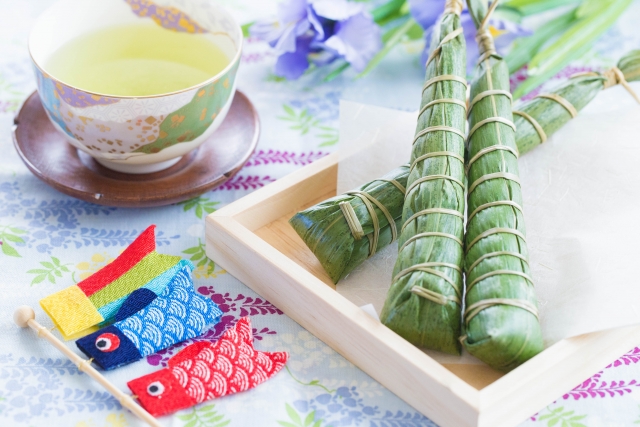
Kashiwamochi and Chimaki are the traditional Japanese sweets for Children’s Day. Kashiwamochi is a mochi sweet filled with red beans and wrapped in oak leaf. This tradition started in the Edo period, and was believed to bring good luck to home. Chimaki is a mochi wrapped in bamboo leaves, and it is originally from China and spread around Japan in the Heian period. It was believed to have the power to ward off the evil spirits. In the Kanto region, it is common to eat Kashiwamochi on Children’s Day, but in the Kansai region on the other hand, it’s more common to eat Chimaki rather than Kashiwamochi. Every region in Japan has a slightly different tradition for what to eat on Children’s Day.
Famous Koinobori Festivals around Japan
Tokyo Tower (from late March-early May)
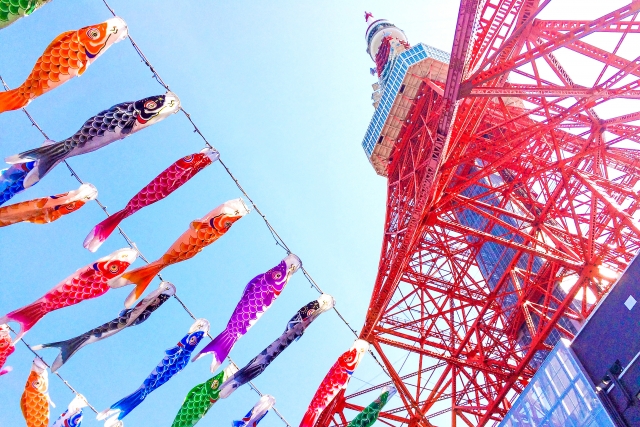
You can see a special collaboration at Tokyo Tower where 333 carp streamers fly around the symbolic tower of Tokyo. The number of carp represents the height of Tokyo Tower, which fascinates visitors with different colors and sizes. It also features a giant pacific saury called Sanma in Japanese. It is recognized as a symbol of hope and love for Ofunato city in Iwate prefecture which was affected by the earthquake in 2011. They will be visible from March 25 to May 6th, 2025. So, don’t miss it while you’re here!
Get tickets to the main observatory deck of Tokyo Tower
Kanazawa/”Koi-nagashi” (early May)
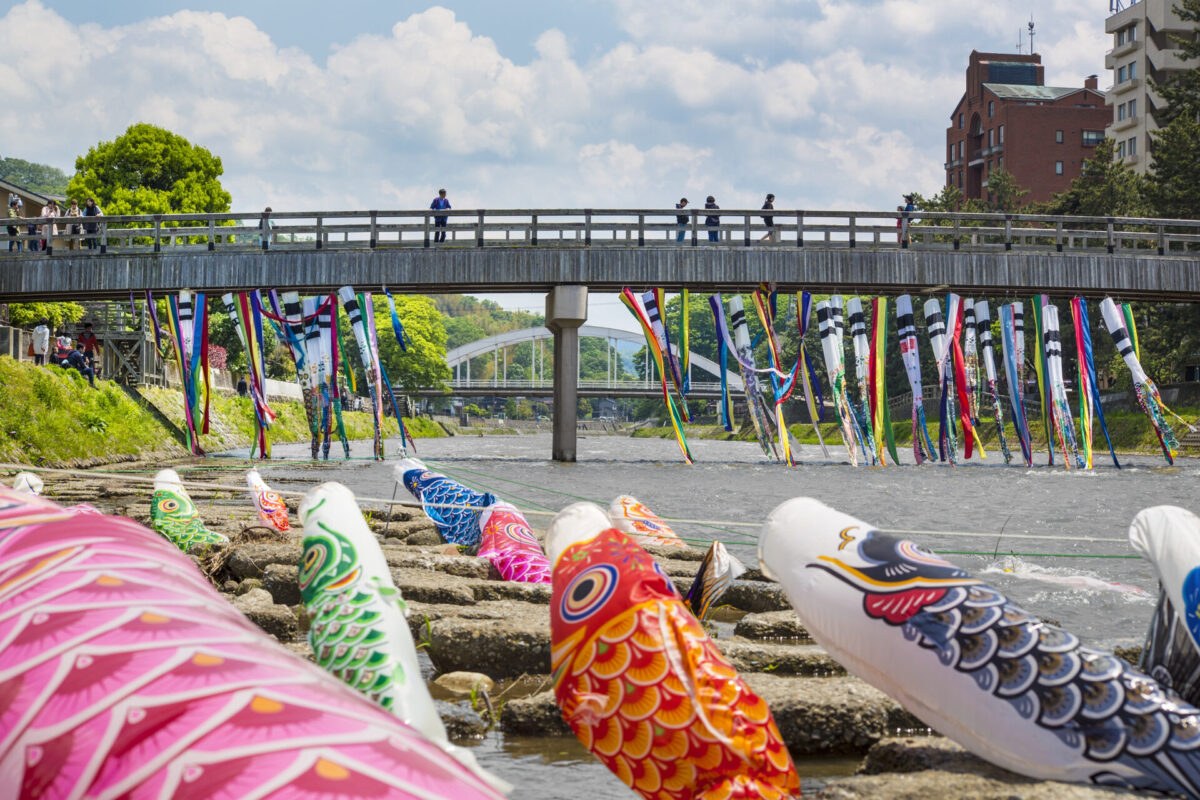
Unique traditional festival held at Asano river which runs through the downtown of Kanazawa City. Colorful carp streamers hung over the bridges create an impressive view with the peaceful stream of the river! They also let some of them under the water, which literally looks as if they were swimming in the river. You can enjoy this festival on May 4th 2025!
Get your shinkansen ticket from Tokyo to Kanazawa through the link below! It only takes 2h25m to get there!
Reserve your accomodation below!
Kannamachi in Gunma/Kanna Koinobori Matsuri (early May)

It’s not widely known, but definitely worth a visit to a festival with a history of over 30 years! 800 koinobori hung with wires gracefully swim over Kanna River in Gunma prefecture. A range of outdoor activities such as kayaking and rafting are also available. Enjoy this festival from May 3rd till may 5th 2025!
To know more about the koinobori festivals in Japan; 10 amazing Koinobori Festivals in Japan
Japan Wonder Travel Tours
Japan Wonder Travel is a travel agency that offers guided tours throughout Japan.
From private walking tours to delicious Food and Drink tours, we can help you organize the best tours just for you! If you want to explore Japan and learn more about the history and backstories of each area you are visiting, our knowledgeable and friendly English speaking guides will happily take you to the best spots!
In addition, we can provide you with any assistance you may need for your upcoming trip to Japan, so please feel free to contact us if yu have any questions or need some help!
▶Tokyo Tsukiji Fish Market Food and Drink Tour
Explore the most lively and popular fish market in Tokyo and try some of the local’s favorite street foods and sake with one of our friendly and knowledgeable English speaking guides!

▶Tokyo 1–Day Highlights Private Walking Tour (8 Hours)
There’s no better way to explore an area than taking a tour with a knowledgeable local guide. You will have the chance to learn about the history and interesting background stories of Tokyo, as well as discover some hidden gems which can be hard to do without a guide.

▶Mt. Fuji Day Trip Bus Tour from Tokyo
Experience the breathtaking views of Mt. Fuji by visiting the highlights of the area on our guided sightseeing bus tour! Departing from Shinjuku in central Tokyo, you can travel comfortably to all of the best spots in the area by bus.

Children’s Day in Japan is not only for kids and their parents. It also offers a great opportunity for everyone to learn traditional Japanese customs that can be seen only on the day. If you don’t have kids, or even not married, there are still a variety of ways to enjoy the special day! You can try making “Kabuto” and “Koinobori” with Origami to bring Japanese tradition to your home.
Follow us on Instagram, Facebook, Twitter, and TikTok for more travel inspiration. Or tag us to get featured!
Happy traveling!
Other articles you might like



This post may contain some affiliate links. When you click through and make a purchase we may receive some commission, at no extra costs to you.
